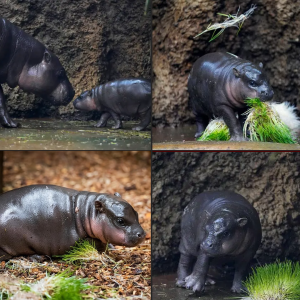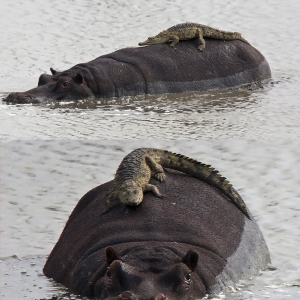:focal(1440x960:1441x961)/https://tf-cmsv2-smithsonianmag-media.s3.amazonaws.com/filer_public/53/43/5343a46c-66e4-4f8e-8f6e-ab731ad69793/leucistic_2.jpg)
The leucistic baby gator is happy and healthy, veterinarians say.
A rare white American alligator has been born at a Florida theme park and wildlife preserve. The unusual-looking creature has leucism, a condition that causes a lack of pigmentation.
The leucistic reptile was born in November at Gatorland, a 110-acre park located south of downtown Orlando. According to the park, the new baby is the first known leucistic gator born in captivity—and one of just eight total in the world.
The tiny, pale gator is a female that weighs 3.4 ounces and measures 19.3 inches long. She was born alongside a brother that has dark coloring.
A veterinarian gave them a once-over and determined both babies to be healthy. So far, they’ve been chowing down on raw chicken and Croc Chow pellets, reports CNN’s Forrest Brown.
The new gators are descendants of a group of leucistic alligators found in a Louisiana swamp in 1987, according to Mark McHugh, the park’s president and CEO, who shared news of the birth in a Facebook video. Since 2008, three of those Louisiana gators have been living at Gatorland, per the Orlando Sentinel’s Dewayne Bevil.
One of them, a male named Jeyan, recently mated with a dark-colored female named Ashley to produce the two new babies.
“There has never been a white offspring from that group of 18 brothers that were born in 1987,” McHugh tells the Orlando Sentinel. “This is the very first one. So, it is incredibly rare.”
/https://tf-cmsv2-smithsonianmag-media.s3.amazonaws.com/filer_public/9f/64/9f64bdb1-6b5d-4116-a756-98601db8abfc/danielle_and_baby_leucistic.jpg) Danielle Lucas, animal care director at Gatorland, holds up the unnamed baby gator. Gatorland / Ken Guzzetti
Danielle Lucas, animal care director at Gatorland, holds up the unnamed baby gator. Gatorland / Ken Guzzetti
Leucism is commonly mistaken for albinism, and while both traits can lead animals to have a paler appearance, they are different conditions, according to the National Park Service. Albinism, which results from a genetic mutation, affects the body’s production of the pigment melanin. Albino animals often have red or pink eyes, because the lack of melanin allows the color of their blood vessels to shine through.
Leucism, meanwhile, is a partial loss of pigmentation and often results in splotchy or patchy coloration. Leucistic animals typically have normal-colored eyes.
Animals with both conditions are particularly susceptible to sunburns. To help protect the pale creatures in its care, Gatorland opened a special “White Gator Swamp” habitat in 2020, which has filtered sunlight.
It’s difficult to know exactly how many leucistic alligators exist in the wild, because the condition makes them more vulnerable to other creatures looking for a meal, according to the Audubon Nature Institute.
“Leucistic young lack protective camouflage coloring and are easy pickings for predators,” per the institute.
Visitors to the park should be able to see the new babies in person starting early next year. In the meantime, the park is asking fans of the new little ones to share suggestions of possible names on social media.
Gatorland is also home to a rescued alligator with no upper jaw. Brought to the park earlier this year, the creature is likely about 4 years old. Veterinarians suspect she lost the top part of her snout in an accident involving a boat propeller or a hunter’s snare, because the cut is straight.
The park named her “Jawlene” after the Dolly Parton song “Jolene.” She’s not available for public viewing, as wildlife officials are trying to help her gain weight and get healthy, per the Tampa Bay Times’ Sharon Kennedy Wynne.





